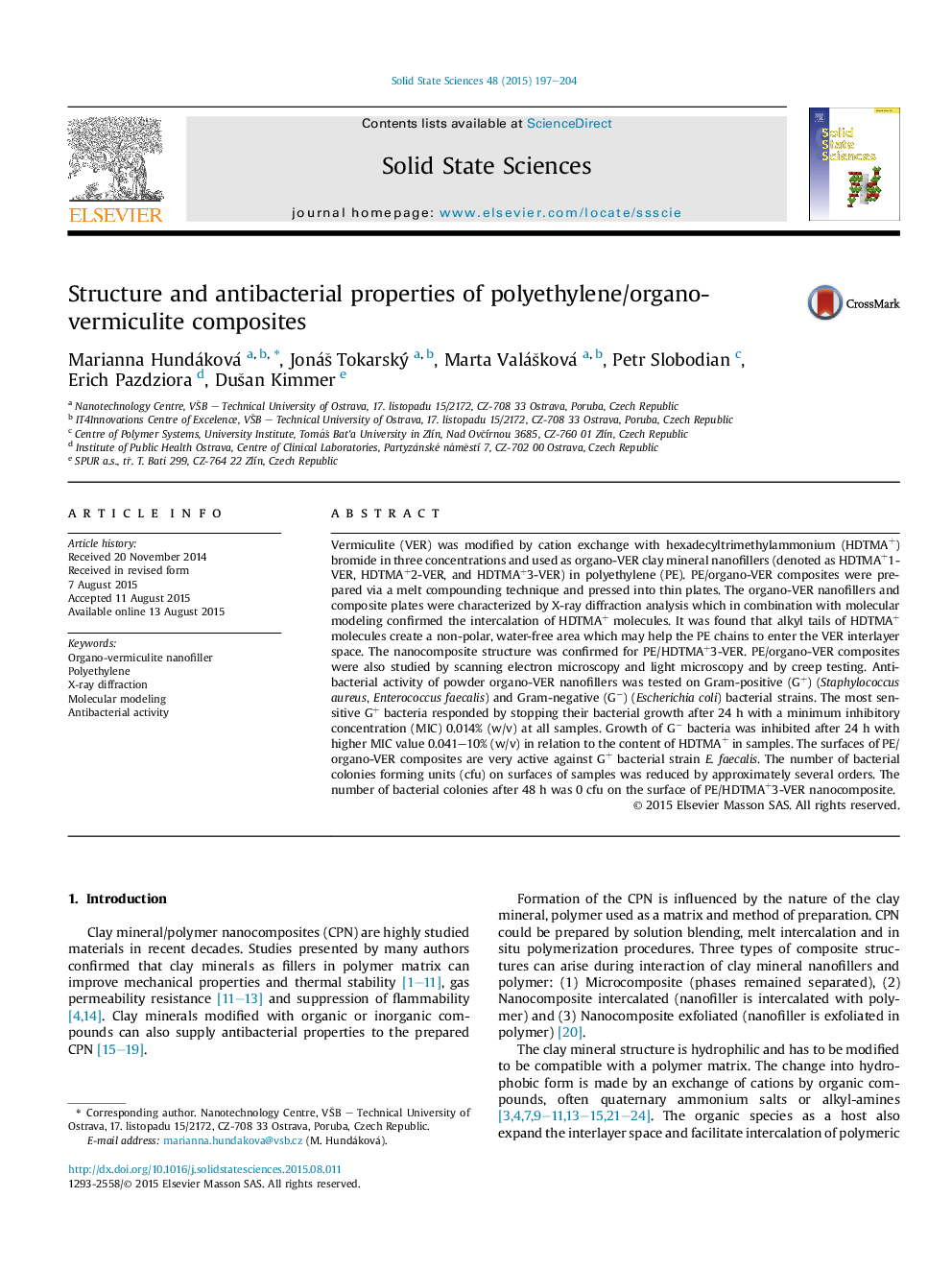| Article ID | Journal | Published Year | Pages | File Type |
|---|---|---|---|---|
| 1504151 | Solid State Sciences | 2015 | 8 Pages |
•Organo-vermiculites (ver) were used as antibacterial nanofillers to polyethylene (PE).•PE/organo-ver materials were prepared via melt compounding method.•Experimental data from XRD analysis were supported by molecular modeling.•Antibacterial activity of organo-ver against Staphylococcus aureus, Enterococcus faecalis and Escherichia coli was evaluated.•Antibacterial activity of PE/organo-ver surfaces against E. faecalis was evaluated.
Vermiculite (VER) was modified by cation exchange with hexadecyltrimethylammonium (HDTMA+) bromide in three concentrations and used as organo-VER clay mineral nanofillers (denoted as HDTMA+1-VER, HDTMA+2-VER, and HDTMA+3-VER) in polyethylene (PE). PE/organo-VER composites were prepared via a melt compounding technique and pressed into thin plates. The organo-VER nanofillers and composite plates were characterized by X-ray diffraction analysis which in combination with molecular modeling confirmed the intercalation of HDTMA+ molecules. It was found that alkyl tails of HDTMA+ molecules create a non-polar, water-free area which may help the PE chains to enter the VER interlayer space. The nanocomposite structure was confirmed for PE/HDTMA+3-VER. PE/organo-VER composites were also studied by scanning electron microscopy and light microscopy and by creep testing. Antibacterial activity of powder organo-VER nanofillers was tested on Gram-positive (G+) (Staphylococcus aureus, Enterococcus faecalis) and Gram-negative (G−) (Escherichia coli) bacterial strains. The most sensitive G+ bacteria responded by stopping their bacterial growth after 24 h with a minimum inhibitory concentration (MIC) 0.014% (w/v) at all samples. Growth of G− bacteria was inhibited after 24 h with higher MIC value 0.041–10% (w/v) in relation to the content of HDTMA+ in samples. The surfaces of PE/organo-VER composites are very active against G+ bacterial strain E. faecalis. The number of bacterial colonies forming units (cfu) on surfaces of samples was reduced by approximately several orders. The number of bacterial colonies after 48 h was 0 cfu on the surface of PE/HDTMA+3-VER nanocomposite.
Graphical abstractFigure optionsDownload full-size imageDownload as PowerPoint slide
